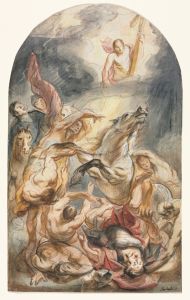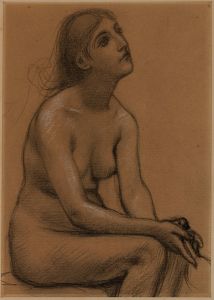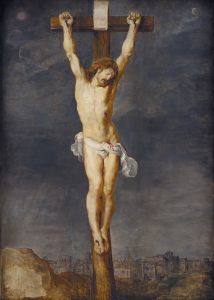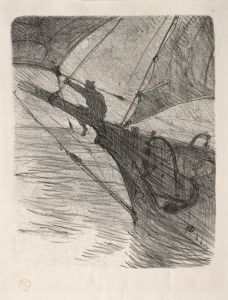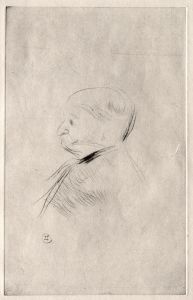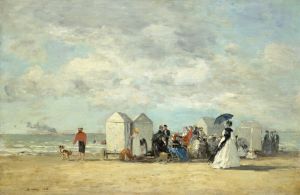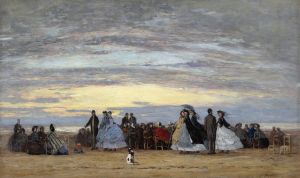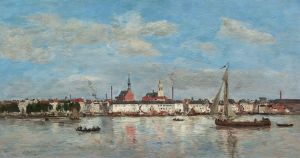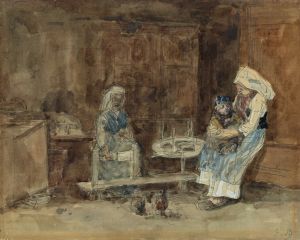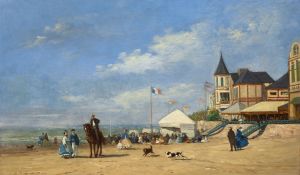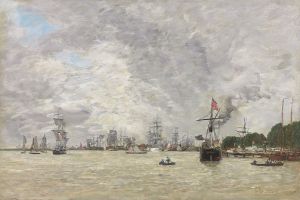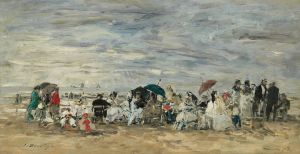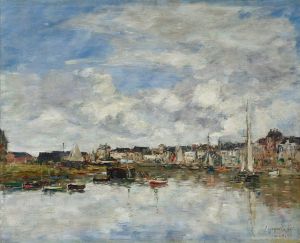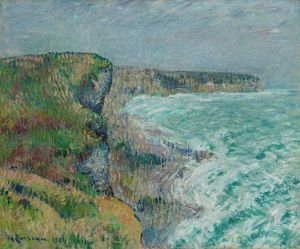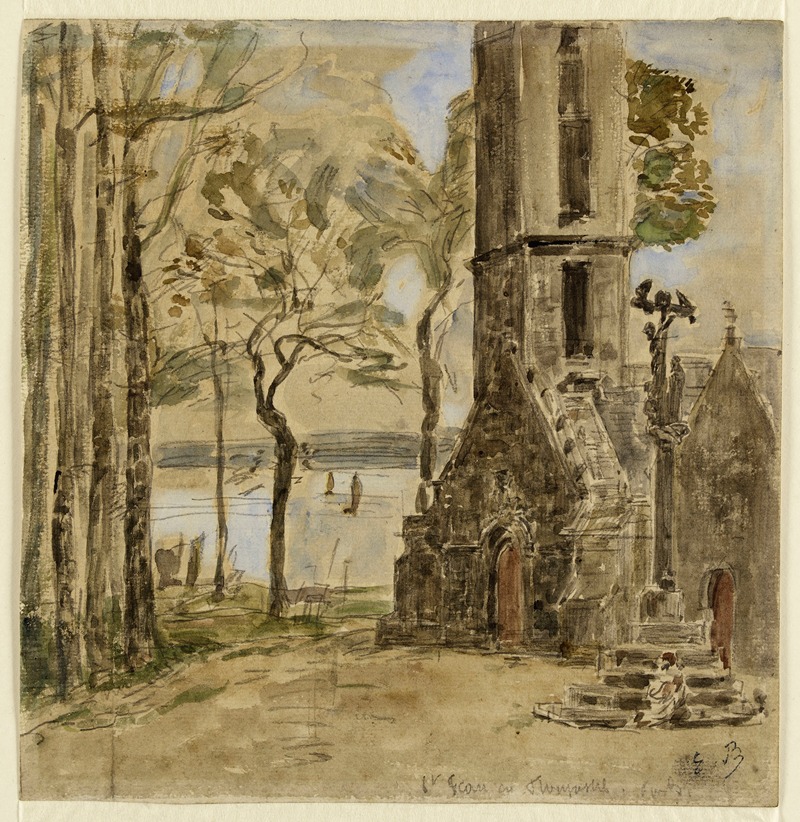
Calvaire breton
A hand-painted replica of Eugène Boudin’s masterpiece Calvaire breton, meticulously crafted by professional artists to capture the true essence of the original. Each piece is created with museum-quality canvas and rare mineral pigments, carefully painted by experienced artists with delicate brushstrokes and rich, layered colors to perfectly recreate the texture of the original artwork. Unlike machine-printed reproductions, this hand-painted version brings the painting to life, infused with the artist’s emotions and skill in every stroke. Whether for personal collection or home decoration, it instantly elevates the artistic atmosphere of any space.
Eugène Boudin, a prominent French landscape painter, is widely recognized for his contributions to the development of Impressionism. One of his notable works is "Calvaire breton," which translates to "Breton Calvary." This painting is a reflection of Boudin's fascination with the landscapes and cultural heritage of Brittany, a region in northwestern France.
"Calvaire breton" depicts a traditional Breton calvary, which is a type of monumental public crucifix found in many villages in Brittany. These calvaries are often intricately carved and serve as important religious and cultural symbols in the region. Boudin's painting captures the essence of these structures, highlighting their significance within the Breton landscape.
Eugène Boudin was born on July 12, 1824, in Honfleur, a port town in Normandy. He began his career as a stationery and picture frame dealer, which allowed him to meet various artists and develop his interest in painting. Boudin was largely self-taught, although he did receive some formal training at the École des Beaux-Arts in Paris. He was influenced by the works of Dutch landscape painters and the Barbizon School, which emphasized painting nature directly from life.
Boudin is best known for his seascapes and beach scenes, particularly those depicting the coastlines of Normandy and Brittany. His ability to capture the changing effects of light and atmosphere made him a precursor to the Impressionist movement. Claude Monet, one of the leading figures of Impressionism, credited Boudin with teaching him the importance of painting en plein air (outdoors).
In "Calvaire breton," Boudin employs his characteristic loose brushwork and keen observation of natural light. The painting likely dates from the latter part of his career when he frequently visited Brittany and became deeply inspired by its rugged landscapes and unique cultural elements. The composition typically features a calvary set against a backdrop of the Breton countryside, with its distinctive light and weather conditions.
Boudin's work was well-received during his lifetime, and he exhibited regularly at the Paris Salon. He was awarded the Legion of Honor in 1892, recognizing his contributions to French art. Despite his success, Boudin remained modest and dedicated to his craft, continuing to paint until his death on August 8, 1898.
"Calvaire breton" is a testament to Boudin's skill in capturing the spirit of a place and its people. Through his depiction of the Breton calvary, he not only showcases the region's religious heritage but also its natural beauty. The painting stands as an important piece within Boudin's oeuvre, illustrating his role in the transition from traditional landscape painting to the innovative approaches of the Impressionists.
Today, Eugène Boudin's works, including "Calvaire breton," are held in high esteem and can be found in major museums and private collections around the world. His legacy endures as a pioneer who paved the way for future generations of artists to explore and celebrate the natural world through their art.





